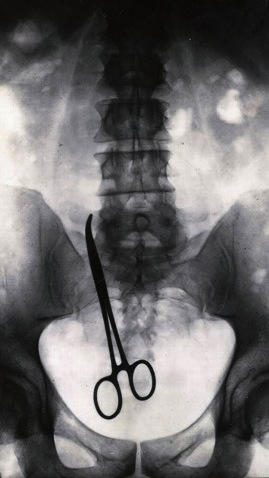 In an op-ed in today’s New York Times (More Treatment, More Mistakes), Dr. Sanjay Gupta argues that we currently face a crisis of about 200,000 people dying each year from medical mistakes. In doing so, Dr. Gupta — a neurosurgeon and chief medical correspondent for CNN — says that many of the injuries and deaths come from too many tests and procedures.
In an op-ed in today’s New York Times (More Treatment, More Mistakes), Dr. Sanjay Gupta argues that we currently face a crisis of about 200,000 people dying each year from medical mistakes. In doing so, Dr. Gupta — a neurosurgeon and chief medical correspondent for CNN — says that many of the injuries and deaths come from too many tests and procedures.
He cites a few war stories to support his theory about too many tests — and injuries/deaths that come from the treatments or misdiagnosis. But that is not the part that I take issue with.
This is the problematic part: Dr. Gupta claims that the reason too many tests are ordered are, you guessed it, “defensive medicine” because doctors fear lawyers and lawsuits. The problem is not with the medical community, he says, but the legal one. He writes:
Certainly many procedures, tests and prescriptions are based on legitimate need. But many are not. In a recent anonymous survey, orthopedic surgeons said 24% of the tests they ordered were medically unnecessary. This kind of treatment is a form of defensive medicine, meant less to protect the patient than to protect the doctor or hospital against potential lawsuits.
I take issue with that last part I put in bold. Actually, it isn’t just that I take issue with it, but that it flies directly in the face of empirical data. It seems to be accepted wisdom in the medical community that lawyers are to blame for increased costs (and now, increased injuries and death). I noted this exact same issue a couple weeks ago when Florida doctor Lee S. Gross made similar comments to his local paper.
Given that the medical community has a long and rich history of doing research to improve medicine, you would think that, when research challenges accepted wisdom, that the community would sit up and take notice.
As I noted to Dr. Gross, when Texas implemented medical malpractice “reform” back in 2003 that capped pain and suffering awards at $250,000, the expectation was that there would be fewer lawsuits (that part worked), more doctors coming to Texas (that part failed) and lower medical costs (also a failure). The reason for fewer lawsuits, of course, is that medical malpractice cases are so difficult, expensive and risky to bring, that lawyers can’t afford to take smaller suits.
If you chop out the significant issue of pain and suffering, you are left with economic loss. And if the patient makes just a modest living, that economic loss component would also be low. Lawyers won’t take the cases because lawyers also have mortgages to pay and offices to run. It’s basic economics. The victim is left in the cold looking at the closed courthouse door.
Now back to the studies I just referenced. The actual data in one study showed that:
There is no evidence that the number of physicians per capita practicing in Texas is larger than it would have been without tort reform.
And the data from a second study showed that so called “defensive medicine” continued even after patient rights had been eviscerated. In fact, medical expenses went up 13% faster than the national average.
There are really only three potential reasons for Dr. Gupta’s theory of too much testing.
- Doctors get reimbursed for each test they do, so there is a financial interest in over-ordering tests;
- Doctors simply want to look under every rock in the search for what ails the patient;
- Doctors have heard so much about lawsuits, that they order extra tests to protect themselves (i.e. defensive medicine).
The problem here is that 2 and 3 above seem to be conflated by many, that being fear for the patient and fear of the patient. If the Texas Malpractice Experiment is a failure in controlling costs and encouraging doctors to move to Texas, then the problem has to be either the financial interest or the desire to do good. But let’s not confuse the desire to do good with “defensive medicine” to protect against lawsuits. Because the empirical data has shot that theory down.
Don’t blame lawsuits for more testing and more deaths from unnecessary treatments. Gutting the Texas malpractice system did not reduce medical costs and tests. The problem lies within the medical community.
[Updated — More on this from Max Kennerly: Atul Gawande Versus Sanjay Gupta On Defensive Medicine]
 With great regularity I hear people write off bad medical outcomes as simply a “risk of the procedure.” It happened again today in an email from a company that helps lawyers find medical-legal experts. One of their experts wrote:
With great regularity I hear people write off bad medical outcomes as simply a “risk of the procedure.” It happened again today in an email from a company that helps lawyers find medical-legal experts. One of their experts wrote:


